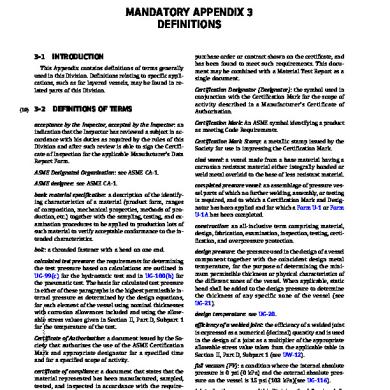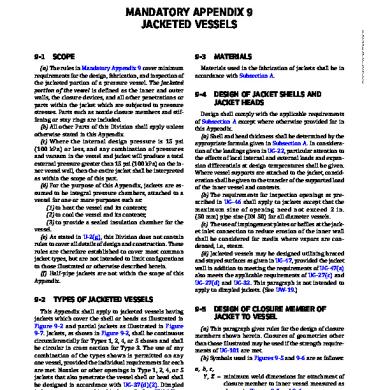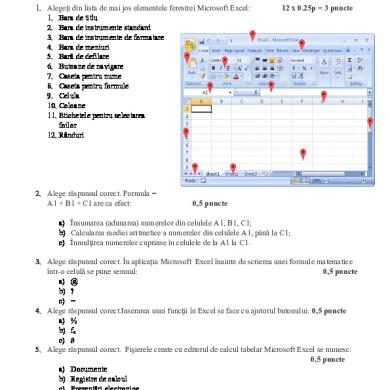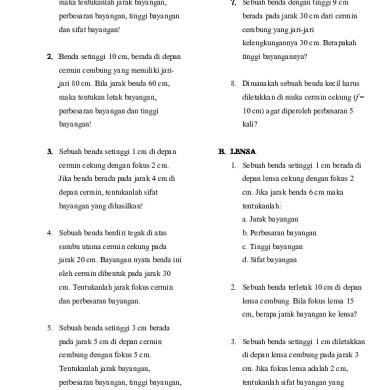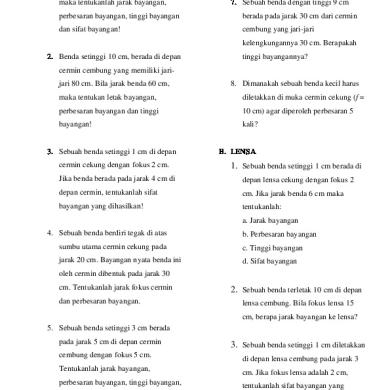* The preview only shows a few pages of manuals at random. You can get the complete content by filling out the form below.
Description
3-1 – 3-2
ASME BPVC.VIII.1-2019
MANDATORY APPENDIX 3 DEFINITIONS 3-1
INTRODUCTION
purchase order or contract shown on the certificate, and has been found to meet such requirements. This document may be combined with a Material Test Report as a single document.
This Appendix contains definitions of terms generally used in this Division. Definitions relating to specific applications, such as for layered vessels, may be found in related parts of this Division. ð19Þ
3-2
Certification Designator (Designator): the symbol used in conjunction with the Certification Mark for the scope of activity described in a Manufacturer’s Certificate of Authorization.
DEFINITIONS OF TERMS
Certification Mark: An ASME symbol identifying a product as meeting Code Requirements.
acceptance by the Inspector, accepted by the Inspector: an indication that the Inspector has reviewed a subject in accordance with his duties as required by the rules of this Division and after such review is able to sign the Certificate of Inspection for the applicable Manufacturer’s Data Report Form.
Certification Mark Stamp: a metallic stamp issued by the Society for use in impressing the Certification Mark. clad vessel: a vessel made from a base material having a corrosion resistant material either integrally bonded or weld metal overlaid to the base of less resistant material.
ASME Designated Organization: see ASME CA-1. ASME designee: see ASME CA-1.
completed pressure vessel: an assemblage of pressure vessel parts of which no further welding, assembly, or testing is required, and to which a Certification Mark and Designator has been applied and for which a Form U-1 or Form U-1A has been completed.
basic material specification: a description of the identifying characteristics of a material (product form, ranges of composition, mechanical properties, methods of production, etc.) together with the sampling, testing, and examination procedures to be applied to production lots of such material to verify acceptable conformance to the intended characteristics.
construction: an all-inclusive term comprising material, design, fabrication, examination, inspection, testing, certification, and overpressure protection.
bolt: a threaded fastener with a head on one end.
design pressure: the pressure used in the design of a vessel component together with the coincident design metal temperature, for the purpose of determining the minimum permissible thickness or physical characteristics of the different zones of the vessel. When applicable, static head shall be added to the design pressure to determine the thickness of any specific zone of the vessel (see UG-21).
--`,``,``,,`,`,,````,`,``,,,`-`-`,,`,,`,`,,`---
calculated test pressure: the requirements for determining the test pressure based on calculations are outlined in UG-99(c) for the hydrostatic test and in UG-100(b) for the pneumatic test. The basis for calculated test pressure in either of these paragraphs is the highest permissible internal pressure as determined by the design equations, for each element of the vessel using nominal thicknesses with corrosion allowances included and using the allowable stress values given in Section II, Part D, Subpart 1 for the temperature of the test.
design temperature: see UG-20. efficiency of a welded joint: the efficiency of a welded joint is expressed as a numerical (decimal) quantity and is used in the design of a joint as a multiplier of the appropriate allowable stress value taken from the applicable table in Section II, Part D, Subpart 1 (see UW-12).
Certificate of Authorization: a document issued by the Society that authorizes the use of the ASME Certification Mark and appropriate designator for a specified time and for a specified scope of activity.
full vacuum (FV): a condition where the internal absolute pressure is 0 psi (0 kPa) and the external absolute pressure on the vessel is 15 psi (103 kPa)(see UG-116).
certificate of compliance: a document that states that the material represented has been manufactured, sampled, tested, and inspected in accordance with the requirements of the material specification (including year of issue) and any other requirements specified in the
joints: for the purpose of this Division, the following definitions are applicable: 414
Copyright ASME International (BPVC) Provided by IHS under license with ASME No reproduction or networking permitted without license from IHS
Licensee=Khalda Petroleum/5986215001, User=Amer, Mohamed Not for Resale, 07/02/2019 13:29:04 MDT
ASME BPVC.VIII.1-2019
3-2
(a) angle joint: a joint between two members located in intersecting planes with an angle greater than 30 deg but less than 90 deg. (b) butt joint: a joint between two members located in intersecting planes between 0 deg and 30 deg, inclusive. (c) corner joint: a joint between two members located in intersecting planes at approximately 90 deg.
of loadings listed in UG-22 that are likely to occur (see UG-98) at the designated coincident temperature [see UG-20(a)]. It is the basis for the pressure setting of the pressure-relieving devices protecting the vessel. The design pressure may be used in all cases in which calculations are not made to determine the value of the maximum allowable working pressure.
layered vessel: a vessel having a shell and/or heads made up of two or more separate layers.
membrane stress: the component of normal stress that is uniformly distributed and equal to the average value of stress across the thickness of the section under consideration.
lined vessel: a vessel having a corrosion resistant lining attached intermittently to the vessel wall.
nominal pipe size (NPS): nominal pipe size as used throughout this Division is defined as the pipe outside diameter for a given pipe size in accordance with ASME B36.10M.
liquid penetrant examination (PT): a method of nondestructive examination that provides for the detection of imperfections open to the surface in ferrous and nonferrous materials that are nonporous. Typical imperfections detectable by this method are cracks, seams, laps, cold shuts, and laminations.
normal operation: operation within the design limits for which the vessel has been stamped. [See UG-116(a).] Any coincident pressure and temperature during a specific operation are permissible, provided they do not constitute a more severe condition than that assumed in the design of the vessel.
magnetic particle examination (MT): a method of detecting cracks and similar imperfections at or near the surface in iron and the magnetic alloys of steel. It consists of properly magnetizing the material and applying finely divided magnetic particles that form patterns indicating the imperfections.
operating or working temperature: the temperature that will be maintained in the metal of the part of the vessel being considered for the specified operation of the vessel (see UG-20 and UG-23).
material: any substance or product form covered by a specification in Section II, Part A, Part B, or Part C, or any other substance or product form permitted for use in pressure vessel construction by this Division.
operating pressure: the pressure at the top of a vessel at which it normally operates. It shall not exceed the maximum allowable working pressure, and it is usually kept at a suitable level below the setting of the pressurerelieving devices to prevent their frequent opening (see M-9).
material manufacturer: the organization responsible for the production of products meeting the requirements of the material specification, and accepting the responsibility for any statements or data in any required certificate of compliance or Material Test Report representing the material.
pressure vessel part: an integral piece of the pressure vessel that is required to contain the specified design pressure (internal or external) and/or the hydrostatic or pneumatic test pressure of the contents of the pressure vessel within the allowable stress limits of this Division. If this part were completely removed, the pressure vessel would not be able to contain the design and/or hydrostatic or pneumatic test pressure within the allowable stress limits. Excess thickness and material extensions are included in the pressure part.
Material Test Report: a document in which the results of tests, examinations, repairs, or treatments required by the material specification to be reported are recorded, including those of any supplementary requirements or other requirements stated in the order for the material. This document may be combined with a certificate of compliance as a single document. maximum allowable stress value: the maximum unit stress permissible for any specified material that may be used in the design equations given in this Division (see UG-23).
primary stress: a stress developed by the imposed loading that is necessary to satisfy the simple laws of equilibrium of external and internal forces and moments. Primary stress can be either membrane or bending stress. Primary membrane stress may be of two types: general and local. A general primary membrane stress is one that is so distributed in the structure that no redistribution of load occurs as a result of yielding. A local primary membrane stress is one that is produced by pressure or other
maximum allowable working pressure: the maximum gage pressure permissible at the top of a completed vessel in its normal operating position at the designated coincident temperature for that pressure. This pressure is the least of the values for the internal or external pressure to be determined by the rules of this Division for any of the pressure boundary parts, including the static head thereon, using nominal thicknesses exclusive of allowances for corrosion and considering the effects of any combination 415 Copyright ASME International (BPVC) Provided by IHS under license with ASME No reproduction or networking permitted without license from IHS
Licensee=Khalda Petroleum/5986215001, User=Amer, Mohamed Not for Resale, 07/02/2019 13:29:04 MDT
--`,``,``,,`,`,,````,`,``,,,`-`-`,,`,,`,`,,`---
porosity: gas pockets or voids in metal.
3-2
ASME BPVC.VIII.1-2019
(b) required thickness: that computed by the equations in this Division before corrosion allowance is added (see UG-22). (c) nominal thickness: except as defined in UW-40(f) and modified in UW-11(g), the nominal thickness is the thickness selected as commercially available, and supplied to the Manufacturer. For plate material, the nominal thickness shall be, at the Manufacturer’s option, either the thickness shown on the Material Test Report {or material Certificate of Compliance [UG-93(a)(1)]} before forming, or the measured thickness of the plate at the joint or location under consideration.
mechanical loading and that is associated with a primary and/or discontinuity effect. Examples of primary stress are (a) general membrane stress in a circular cylinder or a spherical shell due to internal pressure or to distributed loads; (b) bending stress in the central portion of a flat head due to pressure. radiographic examination (RT): a method of detecting imperfections in materials by passing X‐ray or nuclear radiation through the material and presenting their image on a recording medium.
ultrasonic examination (UT): a method for detecting imperfections in materials by passing ultrasonic vibrations (frequencies normally 1 MHz to 5 MHz) through the material.
safety valve set pressure: see ASME PTC 25. spiral weld: a weld joint having a helical seam [see UW-3(a)].
vessel Manufacturer: any Manufacturer who constructs an item such as a pressure vessel, vessel component, or part in accordance with rules of this Division and who holds an ASME Certificate of Authorization to apply the Certification Mark and the appropriate Designator to such an item.
stationary pressure vessel: a pressure vessel to be installed and operated as a fixed geographical location. stud: a threaded fastener without a head, with threads on one end or both ends, or threaded full length. thickness of vessel wall: (a) design thickness: the sum of the required thickness and the corrosion allowance (see UG-25).
416 --`,``,``,,`,`,,````,`,``,,,`-`-`,,`,,`,`,,`---
Copyright ASME International (BPVC) Provided by IHS under license with ASME No reproduction or networking permitted without license from IHS
Licensee=Khalda Petroleum/5986215001, User=Amer, Mohamed Not for Resale, 07/02/2019 13:29:04 MDT



